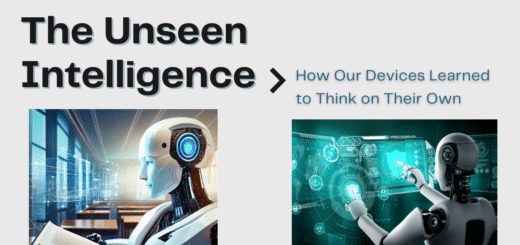The Next Wave: When Code Meets Cells, Steel, and Storms
We’re standing at the edge of a new technological era, one where the digital world is no longer confined to our screens. It’s beginning to breathe, sense, and predict, intertwining with the very fabric of our biological and physical existence. This isn’t just about smarter gadgets; it’s about a fundamental shift in how we understand life, labor, and our planet’s future.
The Digital Human: Medicine Gets a Crystal Ball
Imagine a future where your doctor doesn’t just treat your illness but tests potential cures on a perfect digital copy of you first. This is the promise of digital biology, a field that’s turning the complex symphony of the human body into a language computers can understand.
- Beyond Trial and Error: Instead of the slow, costly process of developing a drug and hoping it works on a broad population, researchers can create a “digital twin” of an individual patient’s biological system. They can simulate how a cancerous tumor in that specific person might react to a new combination of therapies, tweaking the formula in the digital realm until they find the most effective, least toxic option. This moves us from a one-size-fits-all model to truly personalized medicine.
- Predicting the Unpredictable: These models can run life-long simulations. For someone with a genetic predisposition to heart disease, a digital twin could forecast the likely progression of the condition over decades, allowing for preventative lifestyle and medical interventions years before symptoms ever appear. Biology is no longer just about observing what has happened; it’s about predicting what will.
Robots That Learn in the Shadows
The robots entering our world are a far cry from the rigid, repetitive arms of old factories. They are becoming agile, perceptive, and, most importantly, capable of learning in a risk-free digital universe.
- The Virtual Proving Ground: Before a rescue robot ever sets foot in a collapsed building, it has already navigated a thousand different disaster scenarios in a hyper-realistic simulation. It has learned to recognize the sound of a human voice under rubble, to avoid unstable structures, and to manipulate unfamiliar objects. This virtual training means that when it deploys in the real world, it operates with a level of skill and safety that would be impossible to program manually.
- The Delicate Touch: In agriculture, nimble robots, trained in digital orchards, can now identify ripe fruit by subtle color gradients and pick it with a pressure-sensitive grip that doesn’t bruise the skin. They work tirelessly through the night, not as replacements for farmers, but as tools that handle back-breaking labor, allowing human expertise to be directed toward crop strategy and land management.
The Confluence: A Symbiotic Future
The real magic happens when these two frontiers converge. A digital model of a human liver, for instance, can guide a surgical robot in real-time, highlighting the precise boundaries of a tumor invisible to the naked eye. Conversely, data collected by robots during minimally invasive procedures can feed back into the digital models, making them even more accurate. This synergy creates a continuous loop of improvement between the virtual and the physical.
The Planetary Time Machine: Rehearsing Our Climate Future
Perhaps the most profound application of this technology is its role as a planetary-scale time machine. Climate change is the ultimate complex system, but new computational models are giving us the ability to peer into its chaotic heart.
- Hyper-Local Forecasts: Traditional climate models are like a blurry satellite image. The new generation of AI-driven simulations is like switching to ultra-high-definition. They can predict how a specific neighborhood in Miami will experience flooding during a king tide, or how a shift in wind patterns will affect rainfall on a particular California hillside. This allows city planners to fortify exact stretches of coastline and farmers to make precise water management decisions.
- Testing Tomorrow, Today: These systems allow us to run “what-if” scenarios on a global scale. What if we implemented a massive reforestation project in the Amazon? What if we switched a major city’s entire bus fleet to electric? The model can simulate the next fifty years in hours, showing the projected impact on global CO2 levels, regional temperatures, and ocean acidity. This turns climate policy from a guessing game into a strategic, data-driven endeavor.
Conclusion: From Passengers to Pilots
We are transitioning from a species that primarily reacts to its environment to one that can actively shape it. The convergence of digital biology, intelligent robotics, and predictive planetary science represents a fundamental change in the human trajectory.
This technology offers us a kind of foresight once reserved for myth and fantasy. It provides a sandbox for our most critical decisions, from the cellular level to the global stage. The challenge ahead is not just technological, but ethical and human. With these powerful new capabilities, we are no longer just passengers on spaceship Earth. We are being handed the tools to become its pilots, tasked with navigating toward a safer, healthier, and more sustainable future for all. The responsibility is immense, but for the first time, so is our capacity to meet it.


